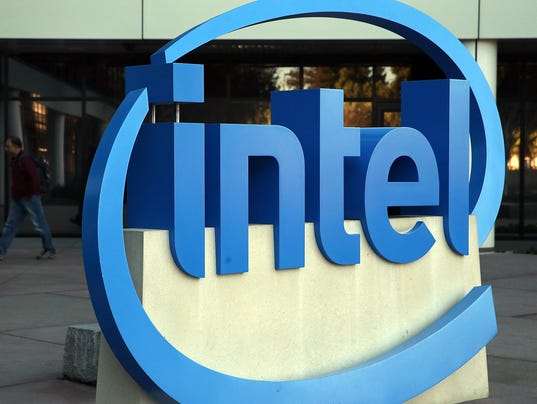 |
| Big Data luring giant Intel back into the auto game |
San Jose, Calif. — The numbers didn’t build up for Intel Corp. to stay greatly included in the auto market in the 1990s. Nearly two years later on, billions in potential incomes include up just great and have the chipmaking giant back in the auto video game in a big way.Driving the business’s return in current years is the lure of Big Data– the info that connected lorries can notice, collect, sort, plan and send to the Cloud, and ultimately offer to all kinds of clients. One price quote puts the value of information collected by cars at $750 billion by 2030.
That’s too much money for any tech business to neglect. And it’s why the leading seller of computer system chips over the previous Twenty Years, as soon as a supplier of micro-controllers in chosen cars and trucks and trucks, has actually aligned itself with a number of partners to provide a turnkey driverless vehicle system, efficient in utilizing the data and monetizing it.“Hopefully at the end of the day, you’ll think … in this partner and collaboration method,” stated Kathy Winter, vice president of Intel’s Automated Driving Group, welcoming press to the business’s new San Jose Innovation Center this week.“And that you’ll think that Intel is well-positioned to develop on not only the in-car compute, however also this connection and network experience, then lastly believing about the information center … when you put all that together into a single service.”The highlight up until now of Intel’s quote to get into the autonomous game was its March announcement the company would pay out $15.3 billion for Israel-based Mobileye NV, maker of on-board electronic cameras and sensors for self-governing driving.“At 4 terabytes of data per day, the average self-governing vehicle will put out the information equivalent of approximately 3,000 individuals,” Intel CEO Brian Krzanich wrote staff members in an e-mail discussing the acquisition. “Put just 1 million self-governing cars on the road and you have the information equivalent of half the world’s population.”That move has actually been reinforced by collaborations with others like Delphi Automotive PLC, BMW AG and Ericsson AB, each becoming key gamers in the push to assist car manufacturers develop cars and trucks that own themselves and on-board tools that catch information.“The only way we’re going to fix this problem throughout the industry is not by ourselves but through working and selecting the best players and partners,” Winter season said.Even Intel‘s Innovation Center, based here in San Jose, was planned with an eye towards drawing in more collaborators. Winter explained it as “a location where “we can be near potential partners, prospective start-ups (and) near OEM partners that have a presence out here in (Silicon Valley).”In the 1990s, Intel officials were less positive about their location in the market. For a business on the cutting edge of computer system chip innovation, it was all about brand-new advancements and continuously increasing processing speeds. Car manufacturers, nevertheless, required technology that would be in their lorries for a decade or more.Intel was faced with having to continue supplying out-of-date innovation over the lifetime of those automobiles and, eventually, chose that was not going to be profitable.Today, the possibility of improving lorry technology is far easier with the advancement of over-the-air software updating. And Intel isn’t really the only chipmaker to notice.Samsung, which is now tough Intel as the global leader in chip sales, received approval today to start checking its own self-driving car in South Korea. Nvidia’s technology is currently being used by the likes of Tesla Inc. and Volvo Cars Ltd. And Qualcomm, already dealing with Volkswagen AG and Panasonic, waits for completion of its$47 billion acquisition of semiconductor maker NXP.”That acquisition is still in development, however we expect to close in the 2nd half of this year, likely in the fourth quarter of this year,”stated Nakul Duggal, Qualcomm’s vice president of product management. “NXP is the number one automobile semiconductor( manufacturer).”A March heading at Forbes.com had Intel “playing catchup with Nvidia and Qualcomm …”But it’s hardly playtime for thechip industry nowadays. Two years of declining international PC sales have business searching for brand-new profits streams. And the desire to wind up on top of the autonomous-and-connected vehicle game has required lots of tech and auto companies to break open their wallets.A year back, General Motors Co. ponied up $1 billion for San Francisco-based Cruise Automation. And last month the automaker revealed it would invest another$14 million
in the start-up’s operations there.Not to be surpassed, Ford Motor Co. revealed in February it would invest $1 billion in Argo AI over the next half-decade. The Pittsburgh business will assist develop the brains of Ford’s self-driving cars.Richard Wallace, director of the transportation systems analysis group at Ann Arbor’s Center for Automotive Research study, explained the positioning amongst business as”fascinating to enjoy.””Definitely, Intel paying 60 times profits for Mobileye just strikes some as absurd,”he said. “And a billion dollars for Cruise Automation– a company that had no consumers? “We cannot even judge which one is worth it or not. The market is not even responding to objective fact. It’s reacting to these gut instincts in some methods and peoples ‘feelings about technology versus their sensations about more concrete items, about brakes and steering wheels.
0 comentarios: